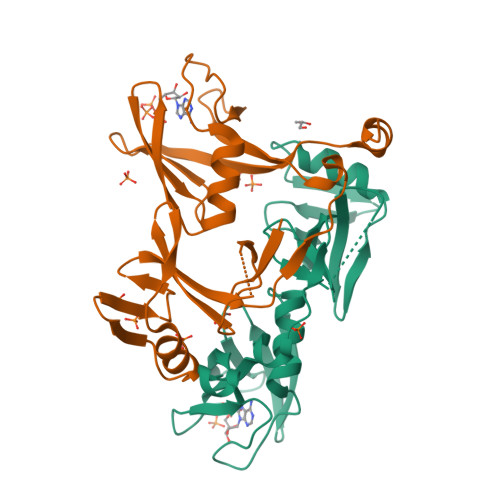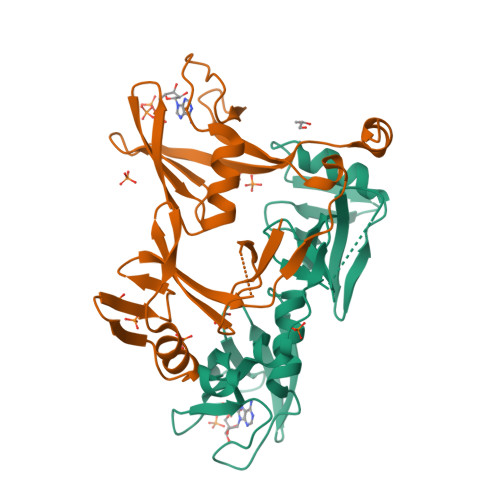Crystal structures and functional analysis of the ZnF5-WWE1-WWE2 region of PARP13/ZAP define a distinctive mode of engaging poly(ADP-ribose).
Kuttiyatveetil, J.R.A., Soufari, H., Dasovich, M., Uribe, I.R., Mirhasan, M., Cheng, S.J., Leung, A.K.L., Pascal, J.M.(2022) Cell Rep 41: 111529-111529
- PubMed: 36288691
- DOI: https://doi.org/10.1016/j.celrep.2022.111529
- Primary Citation of Related Structures:
7SZ2, 7SZ3 - PubMed Abstract:
PARP13/ZAP (zinc-finger antiviral protein) acts against multiple viruses by promoting degradation of viral mRNA. PARP13 has four N-terminal zinc (Zn) fingers that bind CG-rich nucleotide sequences, a C-terminal ADP ribosyltransferase fold, and a central region with a fifth Zn finger and tandem WWE domains. The central PARP13 region, ZnF5-WWE1-WWE2, is implicated in binding poly(ADP-ribose); however, there are limited insights into its structure and function. We present crystal structures of ZnF5-WWE1-WWE2 from mouse PARP13 in complex with ADP-ribose and in complex with ATP. The crystal structures and binding studies demonstrate that WWE2 interacts with ADP-ribose and ATP, whereas WWE1 does not have a functional binding site. Binding studies with poly(ADP-ribose) ligands indicate that WWE2 serves as an anchor for preferential binding to the terminal end of poly(ADP-ribose) chains. The composite ZnF5-WWE1-WWE2 structure forms an extended surface to engage ADP-ribose chains, representing a distinctive mode of recognition that provides a framework for investigating the impact of poly(ADP-ribose) on PARP13 function.
Organizational Affiliation:
Department of Biochemistry and Molecular Medicine, Université de Montréal, Montréal, QC H3T 1J4, Canada.





















